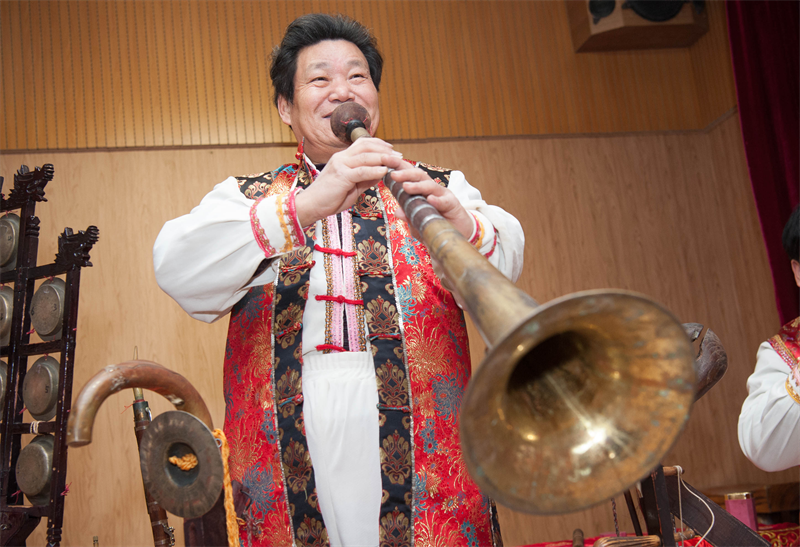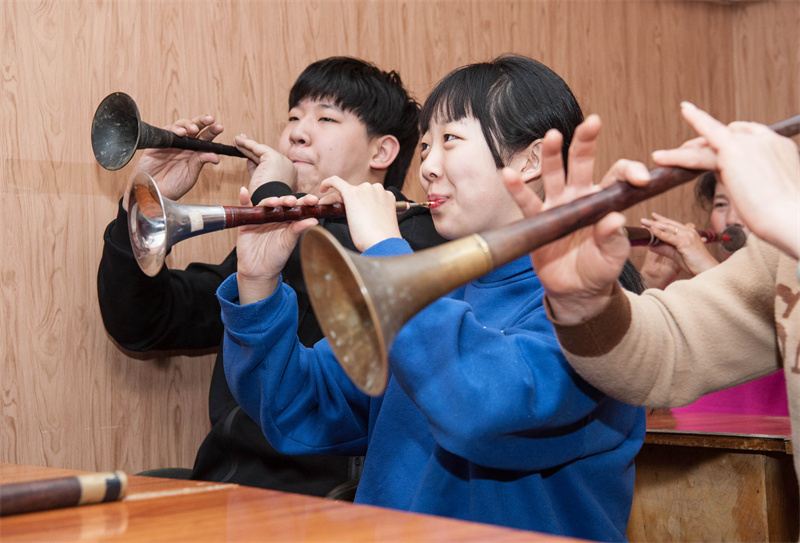Hebei Intangible Cultural Heritage Representative Project - Shijiazhuang Shumen Songs
Sponsored by the Hebei Provincial Department of Culture and Tourism, hosted by the Hebei Provincial Mass Art Museum (Hebei Intangible Cultural Heritage Protection Center), the Hebei Museum, and Hebei News Network, and co-organized by the municipal cultural and tourism departments, and the Xiong'an New Area Propaganda Network Information Bureau, the 2023 Hebei Provincial "Culture into Ten Thousand Intangible Cultural Heritage Celebrates the New Year" event was launched on January 14! Through a series of live broadcasts, short videos, pictures and texts, posters, H5 and other forms of three-dimensional display of the wonderful folk activities in various parts of Hebei Province through the coordination and linkage of all parts of the province and the combination of online and offline, to guide netizens to understand the intangible cultural heritage, pay attention to the intangible cultural heritage, create a strong hometown flavor, and accompany the local people to celebrate the New Year!
During the activities from January 14 to February 5, a beautiful poster will be launched every day to display the intangible cultural heritage projects in various places. Today, let's learn about the representative project of intangible cultural heritage in Hebei Province - Shijiazhuang Shumen Songs.
Shijiazhuang Xiumen Songs has a long history and has a long history. It is mainly popular in Shijiazhuang Xiumen and Luquan, Zhengding, Wuji, Gaocheng, Luancheng, Jingxing and other places. According to the narration and calculation of the old artists, it has a history of more than 300 years. Shijiazhuang Xiumen Blow Song has a beautiful melody and a strong local flavor. The music is mostly rough and simple, simple and pure, the rhythm is lively and jumping, and the mood is warm and spicy. Most of the instruments in the song can simulate the human voice, and even can easily play the cries of various birds and animals, which makes the audience applaud.

Shijiazhuang Xiumen Blow Song is a folk ensemble of wind and percussion music, which is mainly played by the national musical instruments Guanzi and Suona. It is accompanied by sheng, flute, dragon head wengzi, big string, gongs, drums, cymbals, face gongs, boring zi, wooden bangs and other musical instruments. Generally, three modes of A, D and G are used for playing. The suona and the pipe pole are mostly made of cypress, rosewood, rosewood or metal. The suona bowl is made of copper with a hoop in the middle.
In the past, Xiumen blowing songs were often played at weddings, funerals, weddings and festivals, or accompanied by other folk songs and dances such as running donkeys, or played for entertainment in the slack season. Qupai includes "Saw the vat", "Song of the Blue Sky", "Yellow Bean Leaves", "Golden Script", "Little Donkey", "Little Cattle", "Sea Green Song", "Little Erfan", "Little Open Door", etc; Ka Opera usually adopts some traditional aria of Hebei Bangzi, Peking Opera, Pingju, Haha Tune, Liuzi Tune and other operas.

In order to inherit Shijiazhuang Shumen Blow Song, Fu Xifen, the representative inheritor, established the inheritance base to teach apprenticeship and pass on skills, and led the members of the art troupe to participate in public welfare performances every year, cultivating many artistic talents for Hebei Blow Song Music.
 渝公网安备 50010702504639号
渝公网安备 50010702504639号